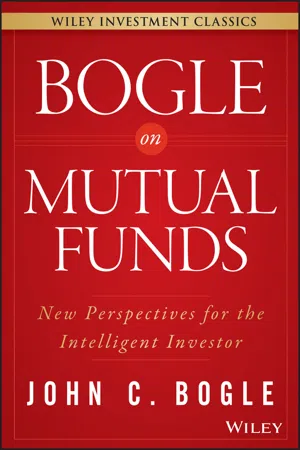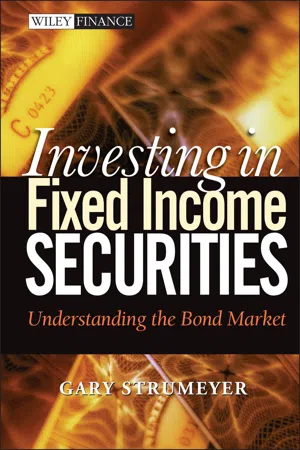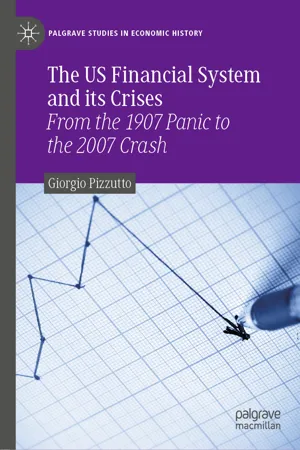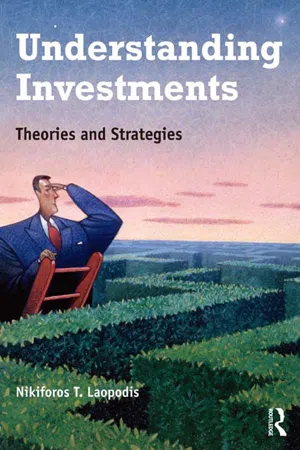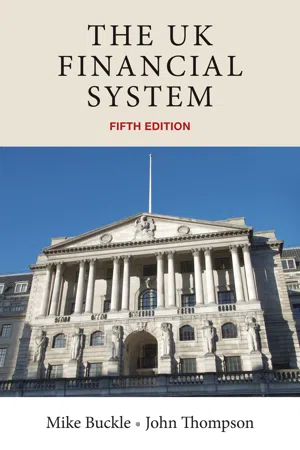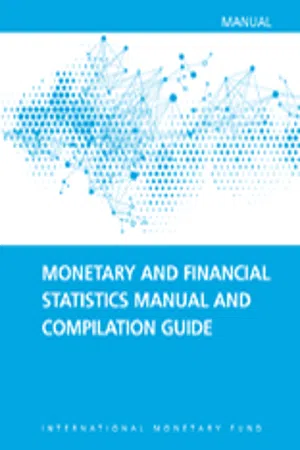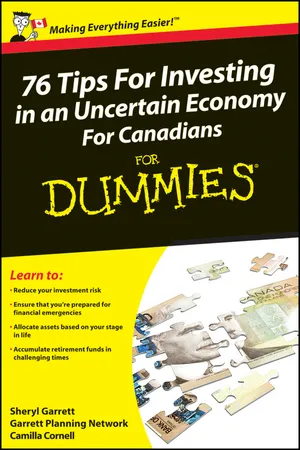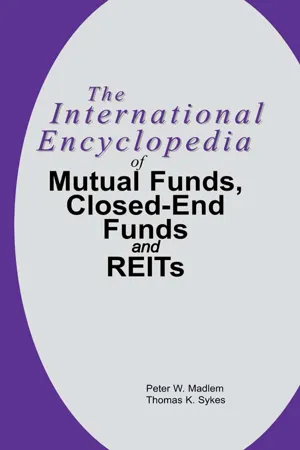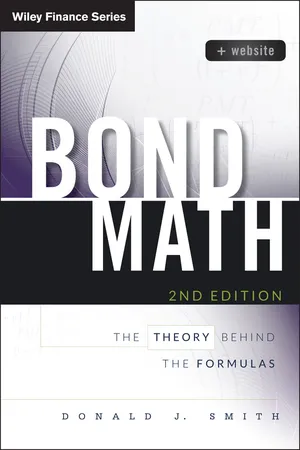Economics
Money Market Mutual Funds
Money market mutual funds are investment vehicles that invest in short-term, low-risk securities such as Treasury bills and commercial paper. They are known for providing investors with a relatively safe place to park their cash while earning a modest return. These funds are often used as a cash management tool and are considered to be highly liquid investments.
Written by Perlego with AI-assistance
Related key terms
12 Key excerpts on "Money Market Mutual Funds"
- eBook - ePub
Bogle On Mutual Funds
New Perspectives For The Intelligent Investor
- John C. Bogle(Author)
- 2015(Publication Date)
- Wiley(Publisher)
First, money market funds of all types provide the most price stability and the most yield variability over time (i.e., the lowest principal risk and the highest income risk). In that sense, their investment characteristics closely resemble U.S. Treasury bills, whose rewards and risks were discussed in the first two chapters. Second, the money market fund is the only class of mutual fund whose total return in every period comprises 100% income return. Unlike stock and bond funds, it offers no opportunity for capital return.Money market funds have existed during a turbulent period for interest rates. At the beginning of 1972, short-term interest rates were relatively low, running about 4% on CDs. Rates then soared to the 12% level in 1974, fell back to 5% by 1976, and, incredibly, topped 15% on a number of occasions from the start of 1980 to mid-1982. Rates then settled into a range of about 6% to 10% through mid-1991, trailing off to less than 3.5% by the end of 1992. Figure 6.1 presents the picture.Figure 6.1Three-Month Certificates of Deposit—Quarterly Yields (1972–92)My analysis of money market funds will focus on three principal factors: (1) the quality of the fund's portfolio, (2) the yield it generates, and (3) the amount the yield is reduced by the fund's operating expenses. In combination, these factors determine virtually the entire return generated by each money market fund. While this may seem obvious today, it was not so long ago that money market funds employed any number of “strategies” to give the impression of relatively superior earning power.Prior to June 1991, for instance, it was possible for Money Market Mutual Funds to offer higher yields than their competitors by holding large positions in lower-rated—and therefore more risky—commercial paper or by extending their average maturities beyond the typical 30-day to 90-day range for the average money fund. This situation made it difficult for investors to determine the degree to which higher risk, in the form of lower quality and/or longer maturity, accounted for the relatively higher yield of one money market fund versus another. - eBook - ePub
Investing in Fixed Income Securities
Understanding the Bond Market
- Gary Strumeyer(Author)
- 2012(Publication Date)
- Wiley(Publisher)
Chapter 8
Money Market Instruments
An individual investor seeking to maximize the return on his short-term fixed income assets, or a cash manager looking to get the biggest bang for her buck on the firm’s liquid assets, must understand the money market (MM) with its unique characteristics and distinctive formulaic calculations. First, you should learn about the myriad MM products available, as well as the players in this unique market. You must understand the products’ characteristics and risk/reward trade-offs. Then, you need to determine the time horizon or duration of the assets purchased. Finally, you must compare the yields on these different products to assess whether you are being rewarded for any additional risks (credit and market) undertaken.The money market involves the borrowing and lending of money for periods of a year and less. Massive sums of capital can be transferred rapidly and efficiently from one economic unit (corporations, municipalities, banks, etc.) to another for relatively short periods of time. Institutions with short-term borrowing needs can meet these needs by maintaining access to the money market and raising funds when required. In the same way, holders of excess cash can maximize their returns by investing in money market securities.Money market securities are thus debt instruments characterized by short-term maturities ranging from overnight to one year. Money market securities are typically liquid, and possess relatively high credit quality and low interest rate risk. Trades in money markets are generally quite large (trades in the billions of dollars are common). Active secondary markets allow most MM securities to be sold prior to maturity if a need for cash emerges.These instruments are influenced by Federal Reserve policy and activity more than any other sector of the fixed income market. Utilizing the money market allows investors to enhance returns on cash reserves, while at the same time maintaining liquidity and preserving capital through high-quality investments. Investors managing large cash balances through the utilization of Money Market Mutual Funds can in effect cut out the middleman and purchase short-term securities directly in the money market. - Paul Mladjenovic(Author)
- 2022(Publication Date)
- Business Expert Press(Publisher)
The last category in our tour is the category of money market funds. Money market funds don’t tend to be referred to as investment accounts, especially, since in recent decades, interest rates have been very low. They tend to usually be a safe place to “park your cash” until you either need the money or are researching new investment opportunities. In periods of rising and/or high interest rates, this fund does indeed become a good investment. The last time money market funds were a good investment was the late 1970s/early 1980s when interest rates were in the high teens (14 to 20 percent). This is the safest category for your money and the rates are competitive when compared with bank accounts.There are three types of Money Market Mutual Funds:Unconventional Funds• Regular money market funds. These invest in short-term money market instruments such as bank certificates of deposit, high-grade commercial paper, and other short-term debt in maturities of under one year and mostly maturing in six months or less. Very often the term is in days or weeks.• Treasury money market funds. This type of fund usually invests the entire portfolio in treasury bills or other short-term treasury securities. If you want liquidity and are very concerned about financial safety, this is a top choice foryour money.• Municipal money market funds. These were covered in a prior section but included here for completeness. This type of money market fund invests in tax-free short-term municipal securities.I do not consider this in the sale realm as the earlier mutual fund categories but many executives want to consider more aggressive, speculative, or “high powered” for a portion of their funds. They can explore the world of unconventional funds that are really outside the scope of this book but they are worth a brief mention here. This category includes choices such as private equity funds, hedge funds, managed futures accounts, real estate investment funds, and funds that specialize in options speculation. Proceed with caution and confer with a trusted financial specialist.Choosing an Individual Mutual FundIn this segment, we’ll talk about choosing an individual mutual fund. And I’ll give you a multipoint approach to do this to make it very easy to choose a mutual fund that’s appropriate for you and that meets your goals and needs.Right category- eBook - ePub
The Capital Markets
Evolution of the Financial Ecosystem
- Gary Strumeyer(Author)
- 2017(Publication Date)
- Wiley(Publisher)
auction rate securities, that ceased to be viable after stresses in the financial system caused investors to desert these money market instruments, resulting in the virtual evaporation of market liquidity. The financial crisis also significantly altered how money market participants, both issuers and investors, view the overall liquidity of money market instruments.The U.S. money markets create the market for the efficient transfer of capital from lenders to borrowers for short durations. Money market securities are debt instruments with short‐term maturities typically ranging from overnight to one year. Massive sums of capital can be transferred rapidly and easily from investors, or lenders, to borrowers for relatively short periods of time. Institutions (such as corporations, banks, and municipalities) with short‐term borrowing needs can meet these needs by maintaining access to the money markets and raising funds when required. Similarly, investors with excess cash (such as high‐net‐worth individuals, money market funds, banks, corporations, and municipalities) can maximize their returns yet maintain liquidity by investing in money market securities. Most money market securities are very liquid and have a high credit quality and low interest rate risk. As a largely institutional market, money market trading activity is often comprised of very large amounts, with trades in the tens or even hundreds of millions of dollars being common. Active secondary markets allow most money market securities to be traded prior to maturity if an investor has a more immediate need for cash. The interest rates of these instruments are largely influenced by Federal Reserve policy more than any other sector of the fixed‐income market. Because of their high credit quality, money market securities allow investors to enhance returns on cash while also maintaining liquidity and preserving capital. While investors managing large cash balances often invest directly in money market instruments, investors who lack the scale or expertise will invest in money market funds that in turn investing on behalf of a pool of investors are active participants in the money markets. In particular, retail investors do not typically invest directly in all money market instruments but instead invest through money funds (although retail investors will often purchase commercial paper, T‐bills, and CDs). - eBook - ePub
The US Financial System and its Crises
From the 1907 Panic to the 2007 Crash
- Giorgio Pizzutto(Author)
- 2019(Publication Date)
- Palgrave Macmillan(Publisher)
Money market funds have never enjoyed government insurance—except during the 2008 crisis—and must thus choose an investment strategy that will reassure their depositors/financers, whose primary objective is not so much high yield but rather the stability of their capital. The sums they have on deposit must be immediately available without the risk of losing value. Institutional money market funds handle the liquidity of financial intermediaries and financial and non-financial corporations and constitute the most important component of money market funds. Retail funds handle the invested capital of families; the values here are much lower than in money market funds. The funds provide a higher yield than could be obtained with a bank account; they pledge to keep a stable quotation, investing primarily not only in short-term government securities (e.g., US Treasury bills and commercial paper) but also in corporate bonds (prime funds). Prime money market funds invest in short-term assets issued by commercial banks and investment banks. The recently introduced money market fund reform exempted money funds from the requirement of preserving the value of its investments at one dollar a share. The shift to a fluctuating value for the net asset value (NAV—the value of a fund’s assets minus the value of its liabilities) introduced a risk into investments in money market funds. Prior to the 2007–2008 crisis, money market funds preserved a constant value of their shares and were considered virtually as safe as bank deposits while offering a slightly higher yield. A significant portion of the assets in a money market fund portfolio is commercial papers, and thus, these funds increase demand for them - eBook - ePub
Understanding Investments
Theories and Strategies
- Nikiforos T. Laopodis(Author)
- 2012(Publication Date)
- Routledge(Publisher)
This is the simplest form of investing and offers several advantages to the investor, such as low risk, high liquidity, and check-writing privileges. The NAV of MMMFs is set at $1 and there are no tax implications at redemption. In addition, tax-exempt money market funds invest in short-term tax-exempt securities like municipal securities. It is thought that MMMFs are the safest kind of mutual fund. But consider the following. First, their return is so low that you cannot beat inflation (your purchasing power declines over time if you park your money long enough in a MMMF). Second, during the financial crisis of 2008, the value of such funds fell (for the first time!) below $1 before the US government stepped in to restore valuations (recall that we discussed this situation in the box titled Lessons of Our Times in Chapter 3). Equity Funds These funds invest exclusively in stocks. They also keep a small percentage of their holdings in money market funds in order to meet redemptions when necessary. Managers pick stocks depending on their investment styles (or strategies), seeking either income or growth. Income funds seek to provide high current income (through high dividend receipts) as well as to preserve the principal (capital). Growth funds seek to invest in fast-growing companies so they can realize capital gains. Growth funds assume more risk and thus pay a premium for their stocks as they create portfolios of companies with high business momentum. Such funds are the most volatile ones and have higher-thanaverage expenses. Equity funds can be further categorized on the basis of the market capitalization of the stocks they hold: small-cap, medium-cap, and large-cap stocks. Large-cap funds are usually less volatile than other cap-type funds because they consist of large, reputable, relatively stable companies - eBook - ePub
The Handbook of Global Shadow Banking, Volume I
From Policy to Regulation
- Luc Nijs(Author)
- 2020(Publication Date)
- Palgrave Macmillan(Publisher)
133Footnotes1See for an historical overview: T. Cook, et al., (1979), Money Market Mutual Funds: A Reaction to Government Regulation or a Lasting Financial Innovation? Federal Reserve Bank of Richmond. Economic Review, July/August 1979, pp. 15–31.2Another argument of its rapid emergence was that money market funds could gain nationwide scale as they did not fall under the legal restrictions on interstate banking; D. Luttrell, et al., (2012), Understanding the Risks Inherent in Shadow Banking: A Primer and Practical Lessons Learned Federal Reserve Bank of Dallas Staff Papers Nr. 18, November.3 H. Mai, (2015), Money market Funds- an Economic Perspective, Deutsche Bank Research, February 26, pp. 2–3.4 H. Mai, (2015), Ibid. pp. 10–16.5The US had MMF incoming regulation both in 2010 and 2014. The European Commission issued its proposal in 2013, which were also based on their experiences with the 2012 eurozone sovereign crisis.6Mai indicates (regarding the European model): ‘[b]ut in case the industry nevertheless experiences a loss of investor confidence, mitigating the risk of an investor run would probably still be difficult. VNAV funds (with a variable NAV (ed.)) in tight financial conditions might still face accelerated redemption requests, and financial distress might still spread via counterparty or market channels . CNAV funds would be able to draw on a significant 3% capital buffer as a line of defense. However, pairing a CNAV with a capital requirement further blurs the difference between a mutual fund investment and a bank - eBook - ePub
The UK financial system
Theory and practice, fifth edition
- Mike Buckle, John Thompson(Authors)
- 2016(Publication Date)
- Manchester University Press(Publisher)
SWFs have been criticised on a number of counts. First, there is, as noted above, a lack of transparency in their operation. Thus other governments cannot ascertain what their real objectives are. Second, there is a concern based on strategic considerations. Are the foreign governments trying to take over key industries through their SWFs? So far there is no evidence that this is an objective, but some governments (e.g. Germany and the US) have introduced defensive laws prohibiting takeovers of firms in what are regarded as key industries. In fact, many SWFs themselves restrict their holdings in foreign firms to a low percentage of total equity so as to avoid this criticism. Nevertheless, this reinforces the worry over lack of transparency of many SWFs. The final criticism concerns those countries whose SWF is financed by persistent current account balance of payments surpluses. Here the policy remedy should be to eliminate the surplus rather than continuing a source of imbalance in the world economy.This completes our survey of SWFs and in the next section we consider money market funds.4.7.4 Money market fundsA money market fund (MMF) is a mutual fund which invests its proceeds in short-term money market securities. The aim of the fund is to provide the investors a liquid asset which is easily cashable, with a low risk and a low return but one which is higher than a bank deposit. The low risk comes from portfolio diversification and holding short-term assets. See table 4.8 for details of assets held by euro-denominated MMFs.Two broad types of funds are available: retail and wholesale (with wholesale funds dominating). As the names indicate, retail funds are designed for wealthy private individuals and wholesale funds for institutions such as corporations and pension funds. In the case of wholesale funds, large corporations often have an arrangement with a bank for excess funds to be swept up overnight and transferred to a money market fund. Valuation of the investment in a MMF can be at a constant net asset value (CNAV) or variable net asset value (VNAV). In the case of CNAV valuation there is the commitment by the MMF to repay £1 for every £1 invested. - Jose Cartas, and Artak Harutyunyan(Authors)
- 2017(Publication Date)
- INTERNATIONAL MONETARY FUND(Publisher)
3.143 To avoid distortion in the monetary statistics during the restructuring process, it is recommended that deposit-taking corporations in liquidation or reorganization continue to be included in the ODCs subsector as long as they own financial assets and liabilities, but their liabilities be excluded from broad money as the depositors’ withdrawal demands cannot be met (see paragraph 6.42). Separate data on their accounts should be presented as memorandum items accompanying the ODCs sectoral balance sheet. It is recognized that in practice it is usually difficult to get data on the accounts of banks in liquidation reported on a regular basis.Money market funds [S123]
3.144. For an investment fund to be recognized as an MMF, there needs to be: (1) a certain degree of capital certainty (store of nominal value); and (2) the possibility to withdraw funds immediately or on short notice. If the preceding conditions are not met, the institution is not classified as an MMF but as a non-MMF investment fund.MMFs are collective investment schemes that raise funds by issuing shares or units to the public. The proceeds are invested primarily in money market instruments, money market fund (MMF) shares or units, transferable debt instruments with a residual maturity of not more than one year, bank deposits, and instruments that pursue a rate of return that approaches the interest rates of money market instruments3.145 Some MMFs offer the facility to withdraw funds from shareholder accounts through checks payable to third parties or other means of direct payments to third parties. These payments to third parties may be limited with respect to minimum amount or maximum number of checks that can be written in a specified period.3.146- Sheryl Garrett, Camilla Cornell(Authors)
- 2010(Publication Date)
- For Dummies(Publisher)
You can open a money market account at most banks and institutions that offer savings accounts and GICs. Many mutual fund companies also offer money market accounts. Money Market Mutual Funds frequently offer even better rates than bank money market accounts, so check before you invest.So Which One Is Right for You? When you’re choosing which type of cash account to use, consider the following: Your investment strategy When you may need your money The current rate of inflation and whether the interest rate will keep up with inflation Your comfort with using Internet institutions versus your local bank Your familiarity with mutual fund companies How easily you can access your money The restrictions and limitations associated with each type of cash accountWhen investing in money market funds, know that the performance of various funds doesn’t vary widely. Usually only about a 1.5 percent difference exists between the best and the worst returns. The upshot? The funds with the lowest management expense ratios (MERs) and no sales fees tend to perform the best, so avoid buying funds that charge a sales commission.When times are tough and markets are down, keep your short-term money needs in mind. If you know you’re going to need cold hard cash sometime in the next couple of years, keep that sum in a nice, safe cash option. Keeping short-term money in long-term securities like stocks and bonds is flirting with disaster.# 15Government Bonds: Loaning The Government Your Money By Michael Oswalt, CPAGovernments borrow money just as companies do. Although companies can raise cash by selling their own shares as well as by outright borrowing, governments can’t. Their money comes from us, either through our taxes or through government debt instruments like Canada Savings Bonds, treasury bills, and bonds. Essentially, these investments are IOUs from the government with a bit of interest tacked on to reward us for our trouble.- Peter W. Madlem, Thomas K. Sykes(Authors)
- 2014(Publication Date)
- Routledge(Publisher)
A mutual fund is an investment company, a corporation, or trust whose sole business is to make investments on behalf of individuals and institutions sharing a common investment goal. A fund endeavors to do a better job of investing participant funds and managing the investments than individual investors could do for themselves.The funds that form the mutual fund investment pool come in varying amounts from many different investors. The fund managers then use the pool of money to buy a portfolio of stocks, bonds, or money market securities intended to achieve the fund’s financial objectives.While a mutual fund is simply one method of investing, many consider them to be the best investment medium developed in the twentieth century. There are an abundance of investment products, but none match the flexibility and versatility of mutual funds. Mutual funds offer professional management, liquidity, ease of record keeping, diversification, and lower risk—all in one investment package.The investment objectives of mutual funds cover a wide range. There are mutual funds to invest in all types of investments, including: • common stocks; • preferred stocks; • corporate bonds; • tax-free municipal bonds; • U.S. Government obligations; • zero-coupon bonds; • convertible securities; • gold and silver; • foreign securities; and • real estate.A mutual fund’s investment objective, found in the prospectus, determines how fund assets are invested. Some seek higher returns by following, risky aggressive investment strategies; others pursue current income using more conservative investments. Management will rely on fundamental, macro- or micro-economic conditions and even technical analysis to arrive at a suitable portfolio composition.One major attraction of mutual funds is that there are many funds offering the same investment strategy to select from. For example, an individual needing high current income has a lot of bond funds to choose from. An investor might even consider an equity fund and withdraw funds on a systematic basis either monthly or quarterly. An investor desiring growth in assets would look to the various stock funds ranging from aggressive growth to growth and income or may even consider international stock funds. An investor can also mix and match several mutual funds in order to achieve some current income plus inflation protection via bond and equity funds. Some mutual funds, called balanced or asset allocation funds offer this ability internally- eBook - ePub
Bond Math
The Theory Behind the Formulas
- Donald J. Smith(Author)
- 2014(Publication Date)
- Bloomberg Press(Publisher)
CHAPTER 1 Money Market Interest RatesAn interest rate is a summary statistic about the cash flows on a debt security such as a loan or a bond. As a statistic, it is a number that we calculate. An objective of this chapter is to demonstrate that there are many ways to do this calculation. Like many statistics, an interest rate can be deceiving and misleading. Nevertheless, we need interest rates to make financial decisions about borrowing and lending money and about buying and selling securities. To avoid being deceived or misled, we need to understand how interest rates are calculated.It is useful to divide the world of debt securities into short-term money markets and long-term bond markets. The former is the home of money market instruments such as Treasury bills, commercial paper, bankers acceptances, bank certificates of deposit, and overnight and term sale-repurchase agreements (called “repos”). The latter is where we find coupon-bearing notes and bonds that are issued by the Treasury, corporations, federal agencies, and municipalities. The key reference interest rate in the U.S. money market is 3-month LIBOR (the London Interbank offer rate); the benchmark bond yield is on 10-year Treasuries.This chapter is on money market interest rates. Although the money market usually is defined as securities maturing in one year or less, much of the activity is in short-term instruments, from overnight out to six months. The typical motivation for both issuers and investors is cash management arising from the mismatch in the timing of revenues and expenses. Therefore, primary investor concerns are liquidity and safety. The instruments themselves are straightforward and entail just two cash flows, the purchase price and a known redemption amount at maturity.Let’s start with a practical money market investment problem. A fund manager has about $1 million to invest and needs to choose between two 6-month securities: (1) commercial paper (CP) quoted at 3.80% and (2) a bank certificate of deposit (CD) quoted at 3.90%. Assuming that the credit risks are the same and any differences in liquidity and taxation are immaterial, which investment offers the better rate of return, the CP at 3.80% or the CD at 3.90%? To the uninitiated, this must seem like a trick question—surely, 3.90% is higher than 3.80%. If we are correct in our assessment that the risks are the same, the CD appears to pick up an extra 10 basis points. The initiated know that first it is time for a bit of bond math.
Index pages curate the most relevant extracts from our library of academic textbooks. They’ve been created using an in-house natural language model (NLM), each adding context and meaning to key research topics.
